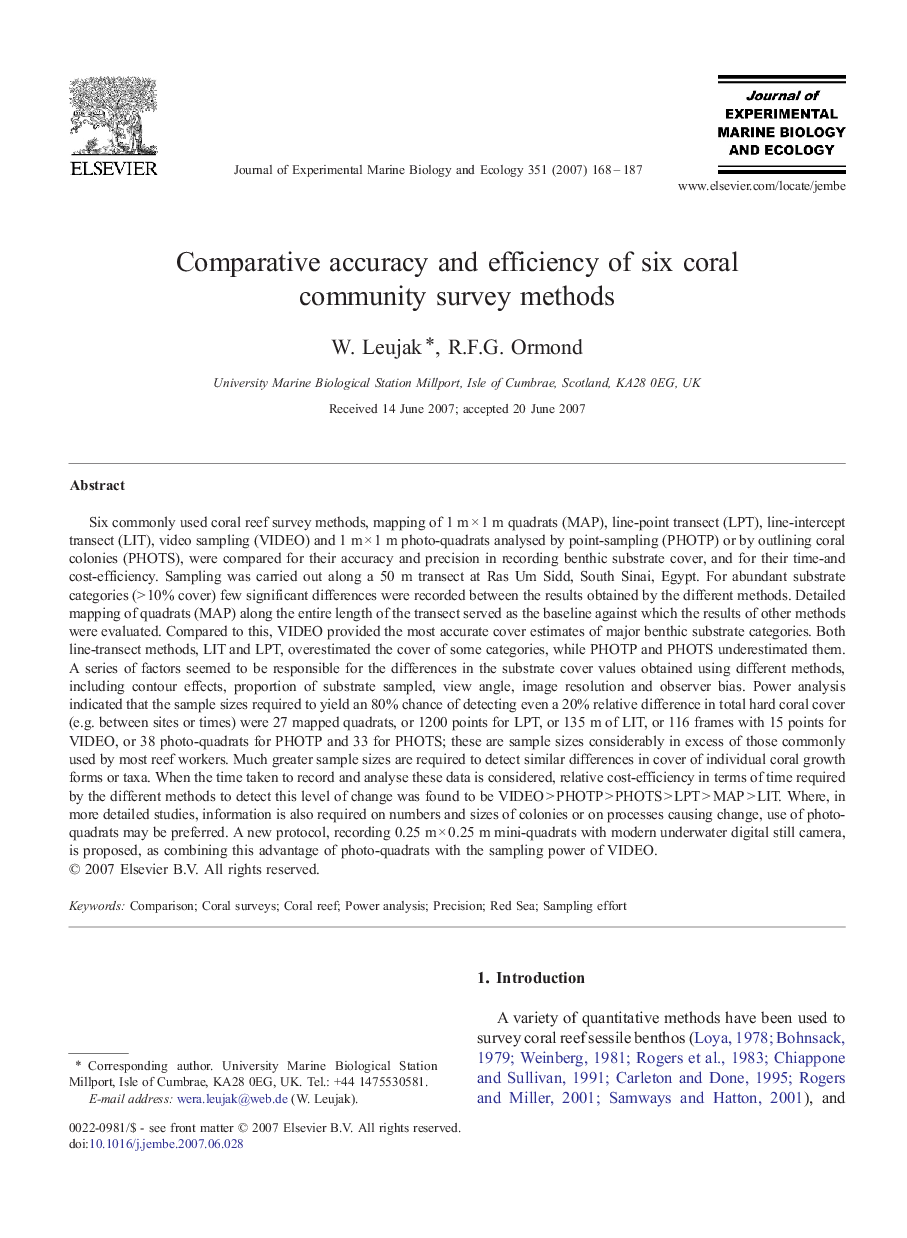| کد مقاله | کد نشریه | سال انتشار | مقاله انگلیسی | نسخه تمام متن |
|---|---|---|---|---|
| 4397548 | 1618487 | 2007 | 20 صفحه PDF | دانلود رایگان |

Six commonly used coral reef survey methods, mapping of 1 m × 1 m quadrats (MAP), line-point transect (LPT), line-intercept transect (LIT), video sampling (VIDEO) and 1 m × 1 m photo-quadrats analysed by point-sampling (PHOTP) or by outlining coral colonies (PHOTS), were compared for their accuracy and precision in recording benthic substrate cover, and for their time-and cost-efficiency. Sampling was carried out along a 50 m transect at Ras Um Sidd, South Sinai, Egypt. For abundant substrate categories (> 10% cover) few significant differences were recorded between the results obtained by the different methods. Detailed mapping of quadrats (MAP) along the entire length of the transect served as the baseline against which the results of other methods were evaluated. Compared to this, VIDEO provided the most accurate cover estimates of major benthic substrate categories. Both line-transect methods, LIT and LPT, overestimated the cover of some categories, while PHOTP and PHOTS underestimated them. A series of factors seemed to be responsible for the differences in the substrate cover values obtained using different methods, including contour effects, proportion of substrate sampled, view angle, image resolution and observer bias. Power analysis indicated that the sample sizes required to yield an 80% chance of detecting even a 20% relative difference in total hard coral cover (e.g. between sites or times) were 27 mapped quadrats, or 1200 points for LPT, or 135 m of LIT, or 116 frames with 15 points for VIDEO, or 38 photo-quadrats for PHOTP and 33 for PHOTS; these are sample sizes considerably in excess of those commonly used by most reef workers. Much greater sample sizes are required to detect similar differences in cover of individual coral growth forms or taxa. When the time taken to record and analyse these data is considered, relative cost-efficiency in terms of time required by the different methods to detect this level of change was found to be VIDEO > PHOTP > PHOTS > LPT > MAP > LIT. Where, in more detailed studies, information is also required on numbers and sizes of colonies or on processes causing change, use of photo-quadrats may be preferred. A new protocol, recording 0.25 m × 0.25 m mini-quadrats with modern underwater digital still camera, is proposed, as combining this advantage of photo-quadrats with the sampling power of VIDEO.
Journal: Journal of Experimental Marine Biology and Ecology - Volume 351, Issues 1–2, 23 November 2007, Pages 168–187